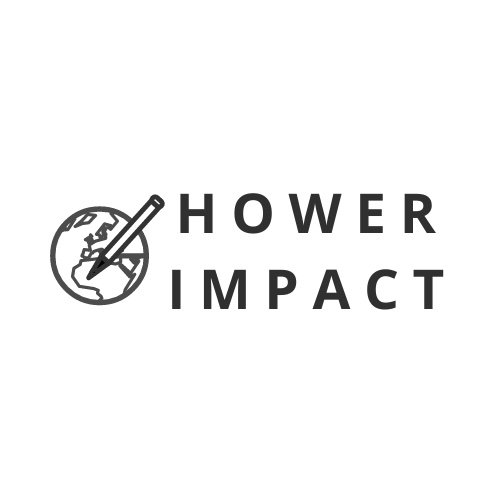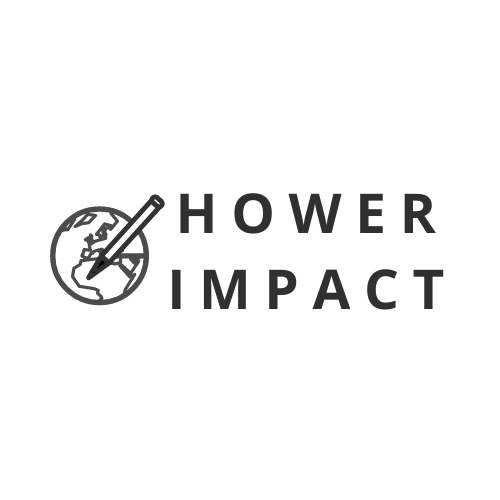Influencing worldviews through sustainability storytelling
Many are familiar with the concept of “know your audience”. When communicating anything to anyone, using a one-size-fit-all approach rarely works because each audience has its own 1.) objectives, 2.) interests, 3.) concerns and 4.) way of looking at the world.
Sustainability communicators typically do a good job addressing the first three pieces, as they are relatively straightforward. Take investors — one of their main objectives is to drive financial value. This means they are interested in data to make better decisions, and are largely concerned with accuracy and comparability. It follows that companies interested in engaging investors on sustainability focus on the data while minimizing the “feel good” stories. That’s why so many companies are moving toward bland, data-driven reporting and away from engaging storytelling.
But investors remain human (for now) — meaning they don’t just make decisions in a data-driven vacuum. Like all homo sapiens, investors are swimming in a sea of biases, emotions, absurdities and distractions that inform their worldview and impact decision making. And I’m not just picking on investors here — consumers, customers, employees, suppliers, policymakers and all stakeholders relevant to sustainability communication are swimming in the same sea of complexity.
To reach people, sustainability communicators must fundamentally understand the worldviews of their disparate audiences so they can frame stories in ways which resonate. This isn’t easy. A good place to start is examining how our worldviews are formed in the first place.
The ‘pictures’ in our heads
The human brain isn’t wired to perfectly perceive the world as it truly is. Every moment of each day, we’re bombarded with more data and stimuli than our brains can process, which diminishes our ability to make sound decisions.
And this only has gotten worse as our personal and professional lives become increasingly digitized. Each morning when we wake up and check Instagram, LinkedIn and/or Facebook, we’re bombarded by political, economic, environmental and social messages — and that’s all before breakfast. Even with the totality of human knowledge at our fingertips, we don’t have the time or mental capacity to understand everything that comes our way.
To make sense of the madness, humans naturally turn to heuristics — or mental shortcuts — that facilitate problem-solving and probability judgements. Storytelling, for example, is one of the oldest and most common heuristic humans have used throughout our history to bring clarity to a complex world. The problem with relying on heuristics such as stories is that — while they can be effective for making immediate judgments — they also can result in irrational or inaccurate conclusions.
“We are all captives of the picture in our head — our belief that the world we have experienced is the world that really exists,” Walter Lippman, a 20th century American writer, reporter and political commentator once said. “The way in which the world is imagined determines at any particular moment what people will do.”
Lippman’s point is that, for the most part, humans don’t first see and then define — we define and then see. We are told about the world before we see it, and imagine most things before we experience them. This means that those preconceptions influence the whole process of perception.
We use stories to create the pictures in our heads about how the world works and our place within it. And humans tend to develop stories that clash — often violently — with each other.
The climate crisis from a certain point of view
The science is clear that we’re experiencing a climate crisis and are on a catastrophic trajectory threatening the future of humanity and all life on Earth — yet most people remain pretty cavalier about it.
An August 2023 Pew poll found that only 37 percent of Americans believe addressing climate change should be a top priority for the president and Congress in 2023, and another 34 percent say it’s an important but lower priority. This ranks climate change 17th out of 21 national issues. Strengthening the economy and addressing rising healthcare costs were top priorities.
Despite having more concrete climate data than ever before and even experiencing climate disasters first-hand, folks remain as unmoved as ever. As I wrote in GreenBiz last year: “While in recent years many climate communicators hoped that data could turn the tide — the more proof points and scientific facts we could muster, the more people would act on the climate crisis — this has turned out not to be the case.”
While it’s tempting to just call these people ignorant or dumb, that is beside the point. No amount of knowledge or capacity for learning will amount to anything if people maintain a worldview that the climate crisis isn’t a big deal. Once we’ve accepted a story, we seek out information that reinforces our worldviews — this is known as confirmation bias.
"Homo sapiens is a storytelling animal that thinks in stories rather than in numbers or graphs, and believes that the universe itself works like a story, replete with heroes and villains, conflicts and resolutions, climaxes and happy endings," writes Yuval Noah Harari in "21 Lessons for the 21st Century."
No amount of hollering about heat waves or extreme storms is going to change a “climate cavalier” mindset. All the data in the world can’t penetrate the stories we’ve already bought into to make sense of an increasingly complicated world.
Fighting stories with stories
There are two chief strategies for influencing someone’s worldview. The first is convincing them to replace an existing story with a different one. The second is by framing your ideas to fit an existing narrative.
If you’re a sustainability communicator offering an alternative worldview, you must start by trying to find common ground in shared values or beliefs, and appeal to those. Consider the person's needs for security, meaning and affiliation, and avoid belittling, moralizing, condemning or being self-righteous. Rather, try to gently pull the person's worldview in your direction from their perspective — not your own. Starting by validating their current worldview can help prevent them from becoming defensive. Present alternatives to what the stakeholder group thinks or sees.
Framing your ideas to fit an existing narrative is a little more practical for sustainability communicators working in the business world. Framing focuses on presenting ideas to an audience that influences the choices people make about how to process that information.
If you’re communicating to an audience with worldviews downplaying the importance of the climate crisis — basically most Americans — leading with climate-centric language won’t be as effective. As the Pew poll cited, most Americans say the economy and healthcare are top issues. You are more likely to reach folks on a deeper level if you convey your sustainability communication through economic and health frames rather than an environmental one.
The sustainability communicator’s burden is to constantly seek to understand the audiences which they hope to influence — and this only can be done through much trial-and-error and learning and growing. Wherever you are in your sustainability communication journey — good luck and keep at it. We need you out there.
This originally appeared in the June 2024 ENGAGE newsletter. Subscribe to have articles like this and other sustainability communication content delivered directly to your inbox once a month.


